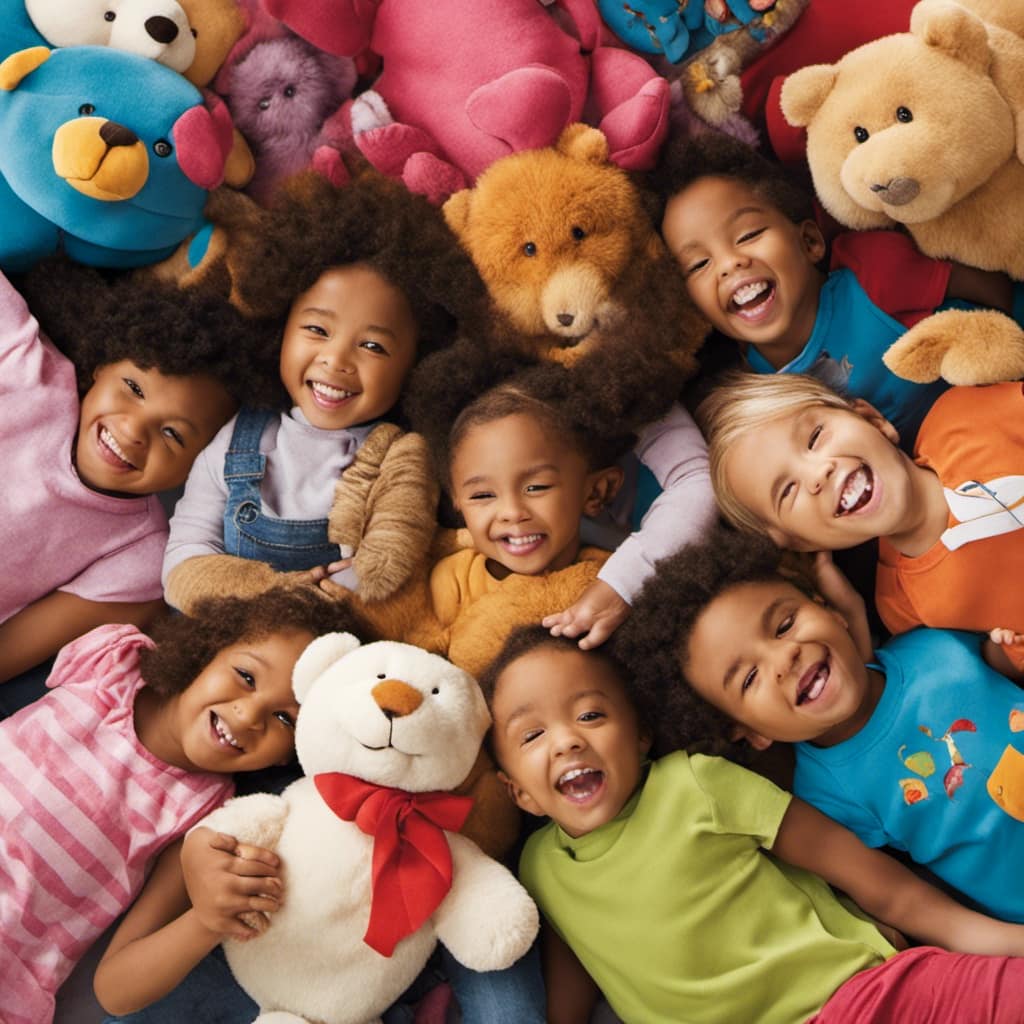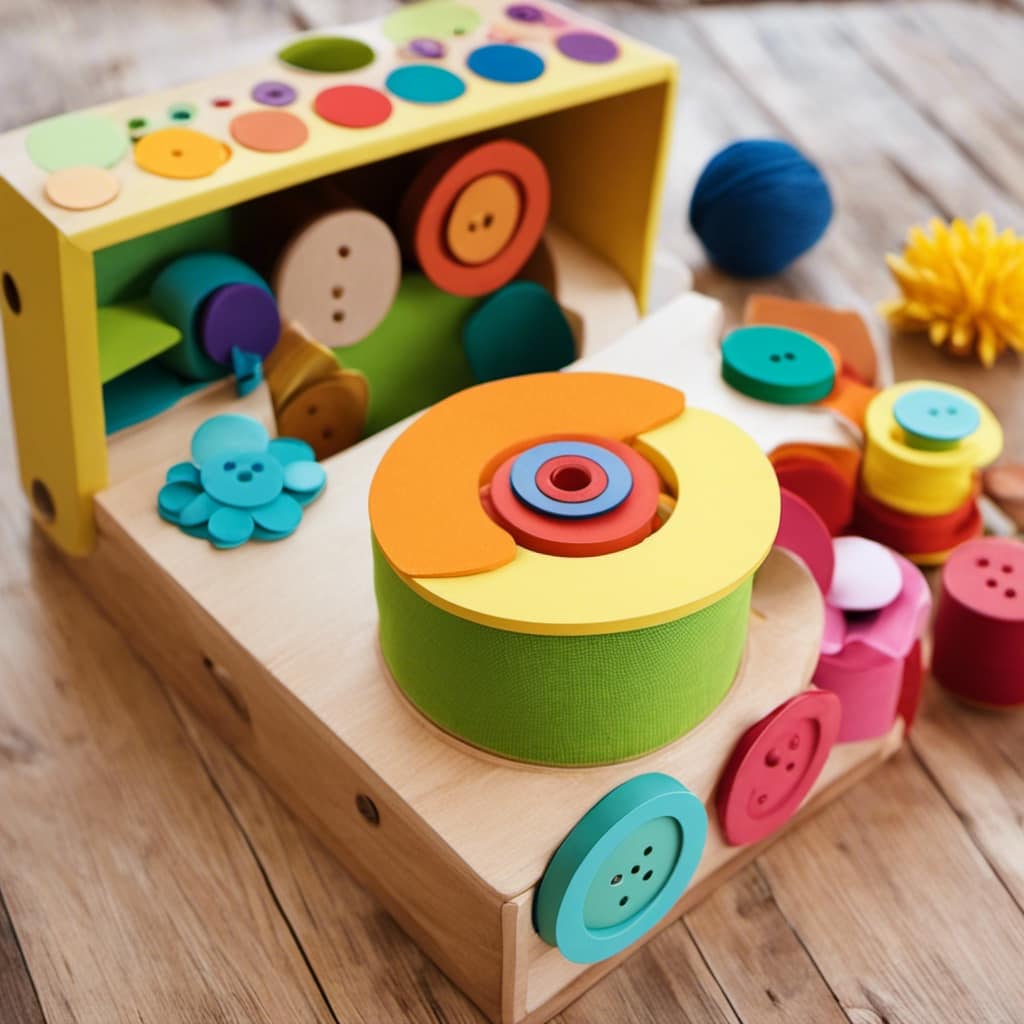To turn toddler meltdowns into teachable moments, focus on mindful listening and empathy. Stay calm, maintain eye contact, and validate your child’s feelings to show you care. Reflect their emotions and guide them with calming strategies like deep breaths. By responding patiently and creating a supportive environment, you help your child develop emotional skills and resilience. Keep exploring and you’ll discover more effective ways to nurture your child’s emotional growth.
Key Takeaways
- Practice mindful listening to fully understand and validate the child’s emotional experience during meltdowns.
- Reflect and name the child’s feelings to foster emotional awareness and teach emotional vocabulary.
- Model calm, supportive responses to demonstrate emotional regulation and create a safe environment.
- Use meltdowns as opportunities to guide children through calming strategies and emotional processing.
- Build trust and resilience by consistently validating feelings and providing empathetic support.

Have you ever wondered how to better support your child’s emotional development? It all begins with how you listen and respond during their moments of distress. When your child is upset, instead of rushing to fix the problem, practice mindful listening. This means giving your full attention, maintaining eye contact, and really hearing what they’re feeling without interrupting or dismissing their emotions. By doing so, you send a powerful message that their feelings are valid and important. This approach helps your child feel understood and safe to express themselves, which is a foundational step in empathy building. When you listen mindfully, you’re not just hearing words—you’re tuning into the emotions behind those words, whether frustration, sadness, or anxiety. This awareness allows you to connect with your child on a deeper level, fostering trust and emotional security.
Empathy building is vital when turning a meltdown into a teachable moment. Instead of reacting with frustration or impatience, try to imagine what your child is experiencing. Reflect their feelings back to them by saying something like, “It looks like you’re feeling really upset right now.” This not only validates their emotions but also teaches them that feelings are okay and manageable. When you consistently respond with empathy, your child learns to identify and name their emotions, which is an essential part of emotional intelligence. It’s about helping them understand that their feelings are normal and that they can navigate through them with your support. Additionally, understanding the importance of local laws and available resources can help you better advocate for your child’s needs during emotional challenges. Over time, this strengthens their ability to regulate emotions and develop resilience.
Turning meltdowns into teachable moments involves more than just listening and empathizing. It’s about guiding your child to process their feelings and find constructive ways to cope. After acknowledging their emotions, encourage problem-solving or calming strategies, such as deep breathing or taking a break. Remember, your calm presence is a model for emotional regulation. When you handle their distress with patience and understanding, you show them that emotions, even intense ones, can be managed. This approach transforms challenging moments into opportunities for growth, helping your child develop essential life skills. Consistent mindful listening and empathy building lay the groundwork for a secure emotional foundation. They teach your child that their feelings matter and that they have a supportive partner in you, capable of guiding them through the ups and downs of emotional life.
Frequently Asked Questions
How Can I Start Emotion Coaching With a Resistant Child?
When starting with a resistant child, focus on building trust and practicing active listening. Show genuine interest in their feelings and avoid pushing them too hard. Use calm words and patience to create a safe space, encouraging open communication. Respect their boundaries while gently guiding them to express emotions. Over time, this approach helps the child feel understood, making them more receptive to emotional coaching and fostering a stronger connection.
What Are Common Mistakes to Avoid in Emotion Coaching?
Think of emotion coaching as walking a tightrope—you want to stay balanced. Avoid validation errors that dismiss your child’s feelings; instead, acknowledge their emotions. Don’t rush to fix problems or dismiss their distress. Building emotional intelligence is a journey, not a sprint. By listening carefully and validating their feelings, you create a safe space for growth. Keep your approach steady, and you’ll help them navigate their emotional landscape with confidence.
How Does Emotion Coaching Differ From Discipline?
You might wonder how emotion coaching differs from discipline. While discipline often focuses on behavior management through consequences, emotion coaching emphasizes developing emotional awareness. You help your child understand and express feelings, fostering self-regulation. Instead of punishing, you guide them through their emotions, turning challenging moments into opportunities for growth. This approach builds trust and emotional intelligence, making behavior management more effective and compassionate.
Can Emotion Coaching Be Effective for Teenagers?
Like a lighthouse guiding ships, emotion coaching can be highly effective for teenagers. It helps boost teen emotional resilience and enhances adolescent communication skills. By actively listening and validating their feelings, you foster trust and openness. This approach encourages your teen to better understand themselves and handle emotions maturely, creating a supportive environment where they can grow stronger emotionally, just as heroes emerge from adversity stronger and wiser.
What Tools Support Ongoing Emotion Coaching Practice?
You can support your ongoing emotion coaching practice with tools like mindful listening and developing emotional literacy. Mindful listening helps you stay present and genuinely understand your teen’s feelings, while emotional literacy enables you to recognize and label emotions accurately. By consistently practicing these skills, you create a supportive environment where your teen feels heard and understood, making it easier to navigate challenges and foster emotional growth over time.
Conclusion
By embracing emotion coaching, you transform storms of frustration into gentle rain, nourishing your child’s growth. Each meltdown becomes a chance to plant seeds of understanding, watering them with patience and empathy. Over time, these moments bloom into resilient, compassionate hearts. Remember, you’re guiding them through a landscape of feelings, turning turbulent clouds into clear skies of connection. With every teachable moment, you craft a future where emotions become bridges, not barriers.











